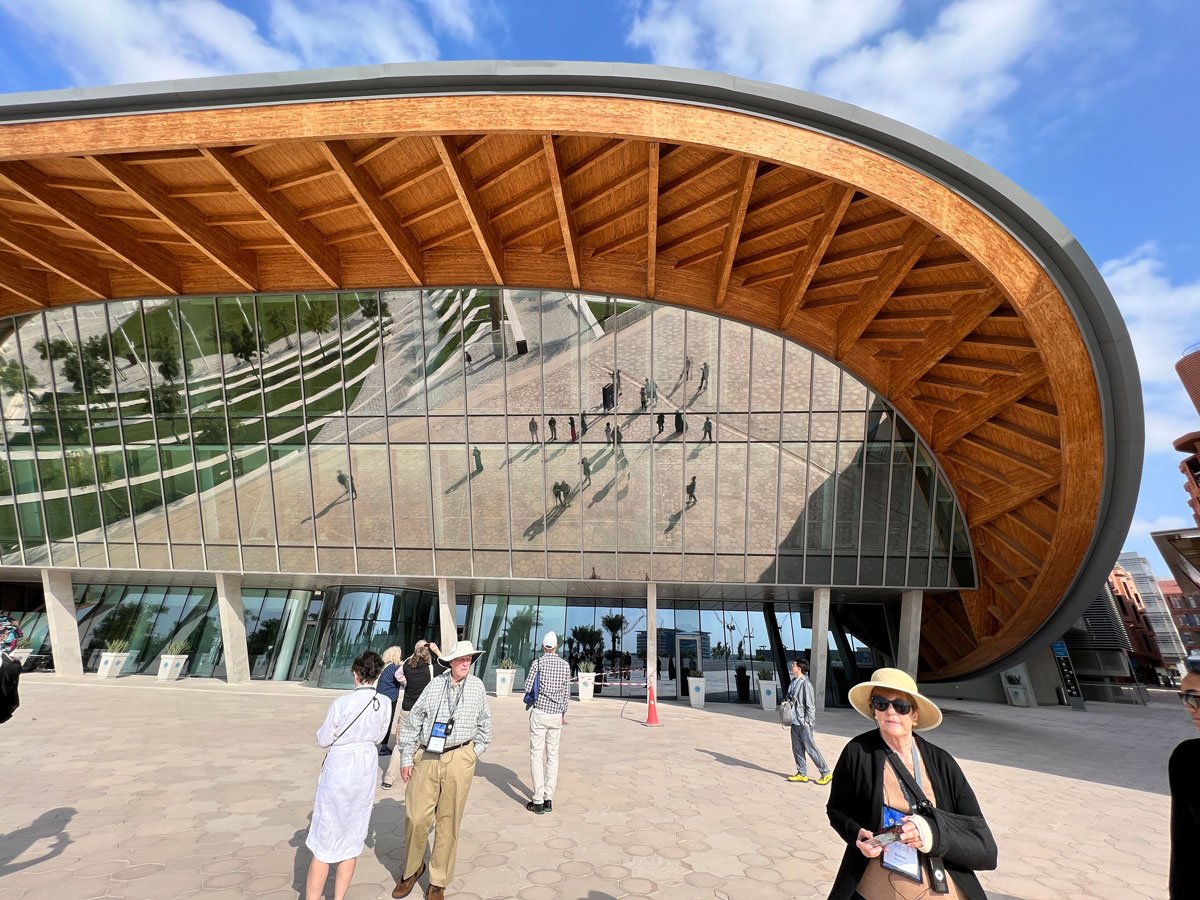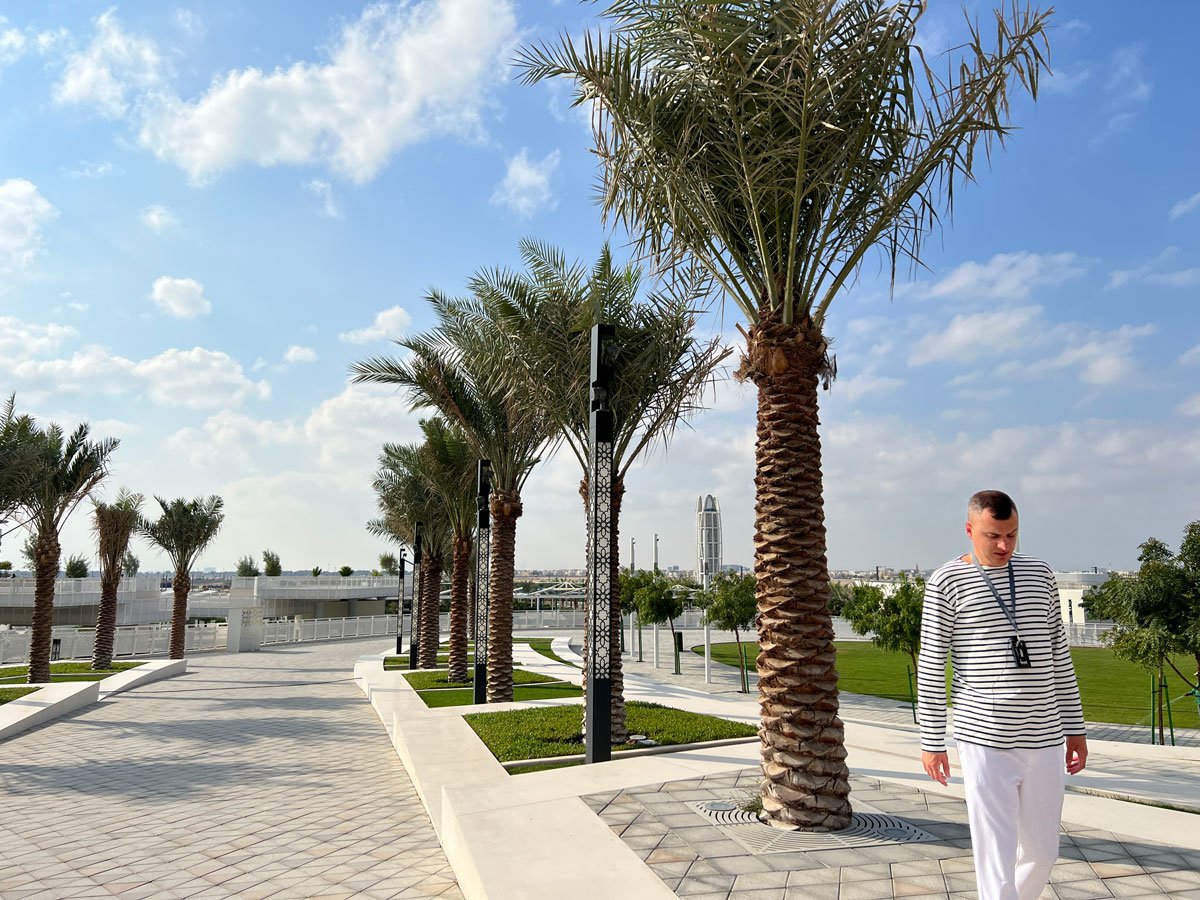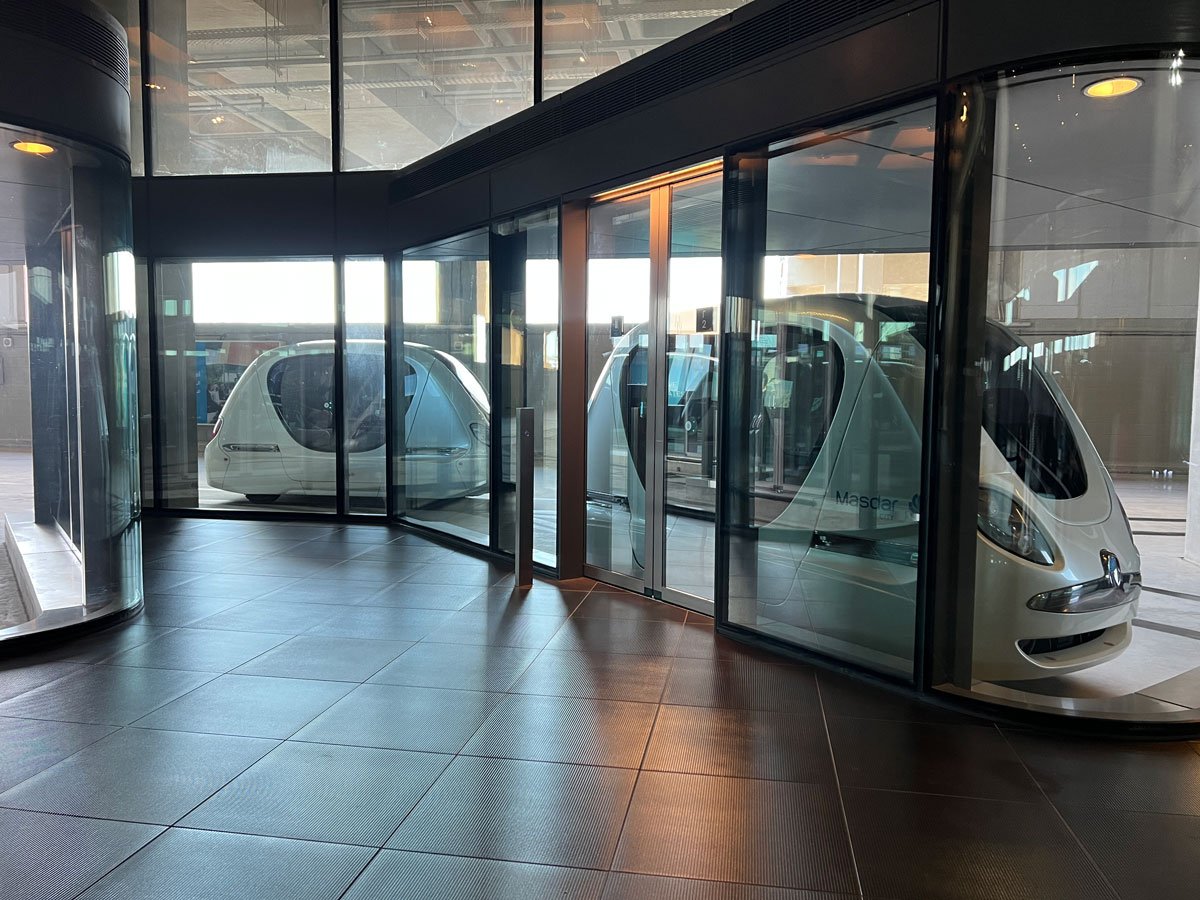Arabian Gulf Surprises - Part 3 - Masdar City
Carleton College travel group at Masdar City - at Wind Tower
Arabian Gulf Surprises – Part 3 – Masdar City
Riding in a driverless car and a driverless bus were not experiences I expected to have during my trip to the United Arab Emirates in January, 2023. Masdar City is located near the Abu Dhabi airport and a few miles from the city center. It was designed and planned to transform an undeveloped area of sandy desert into an ecologically friendly city of the future. The government website promoting this community states:
“In 2008, Masdar City embarked on a journey to develop one of the world's most sustainable cities. Masdar City is a pioneer in sustainability and a hub for research and development, spearheading the innovations to realize greener, more sustainable urban living. The City is home to a rapidly growing clean-tech cluster, business free zone and residential neighborhood with restaurants, shops, and public green spaces.”
My Carleton College tour group traveled by chartered bus from the city center of Abu Dhabi, where our Ponant cruise ship was docked, to get to Masdar City. Our visit began with an introduction at the Siemens Building, one of the first business buildings constructed on the site. We then walked through pedestrian-friendly courtyards, admiring the Wind Tower, unusual architecture, solar panels, and design elements that provide shade from the sun.
The driverless buses, which can take about 6 passengers, travel the same level routes as the pedestrians. Pressing the name of the destination on a screen inside the vehicle will direct the bus to your desired stop, navigating itself around obstacles that might be in its path. The PRT (Personal Rapid Transit) vehicles operate differently. They are smaller and have one designated route running underneath the buildings, like a miniature subway system. They are currently used to transport people from the large parking lots outside the city core to a central gathering spot near the office and university buildings. It was our understanding that the PRT cars were originally intended to have a variety of stops, but that’s not how they currently operate.
The Wind Tower was a fascinating structure located in a small courtyard. Its design is based on a traditional cooling technique used over the centuries for air conditioning. Several years ago, the website of The Earthbound Report, described the tower as follows:
“The tower looks more industrial than the traditional forms, but keeping the whole thing open and simple helps to explain how it works – visitors can walk under it and look up inside. The tall cylinder has louvres at the top that open to the prevailing wind and bring air down into a central courtyard. A mist can be sprayed at the top to cool the air. The Masdar tower itself isn’t going to be a picture-postcard for decades to come, but it has highlighted the usefulness of passive cooling and shown how ancient techniques can be incorporated into modern buildings.”
Masdar Wind Tower
While Masdar City was intended to ultimately be home to 45,000 or more residents, as well as a work or study site for 1500 businesses, research organizations, and universities, it appears slow to be reaching its goals. Development began in 2006 but the completion date has repeatedly been extended, partly because of the recession and the pandemic. Unrealistic goals may also be part of the problem. According to Wikipedia, completion is now expected to occur by 2030. Our tour guide acknowledged that many of the buildings we saw were unoccupied and the residents who lived in the community were mostly university students, attending the Mohamed Bin Zayed University of Artificial Intelligence, the Masdar Institute of Science and Technology, or Khalifa University.
If you’d like to see a similar tour to the one our travel group had at Masdar City, there’s a YouTube video available for viewing. It is aimed at tourists and unfortunately has ads that you need to click through, but it does show the driverless buses, PRT cars, the Wind Tower and some of the unusual architecture.
As has been the case with other parts of my 11-day Arabian Gulf vacation, I have mixed feelings about Masdar City. I’m always happy to learn about innovative projects designed to improve livability, save energy, and demonstrate new techniques of all kinds. However, it’s frustrating to discover that the goals of the project may not be realistic -- more a Disneyland experience than a useful model for a world facing serious climate change challenges. The U.A.E. leaders are investing millions of dollars of oil proceeds to demonstrate their commitment to dealing with climate issues and their need to diversify their economy, educate their citizens and allies, and strengthen international ties. To what extent Masdar City will help them achieve these goals is yet to be determined.
Additional commentary about Masdar City is found on the Bloomberg website, posted in 2020.
Please take a look at my other blog posts and consider becoming a subscriber.
Wind Tower Sign











